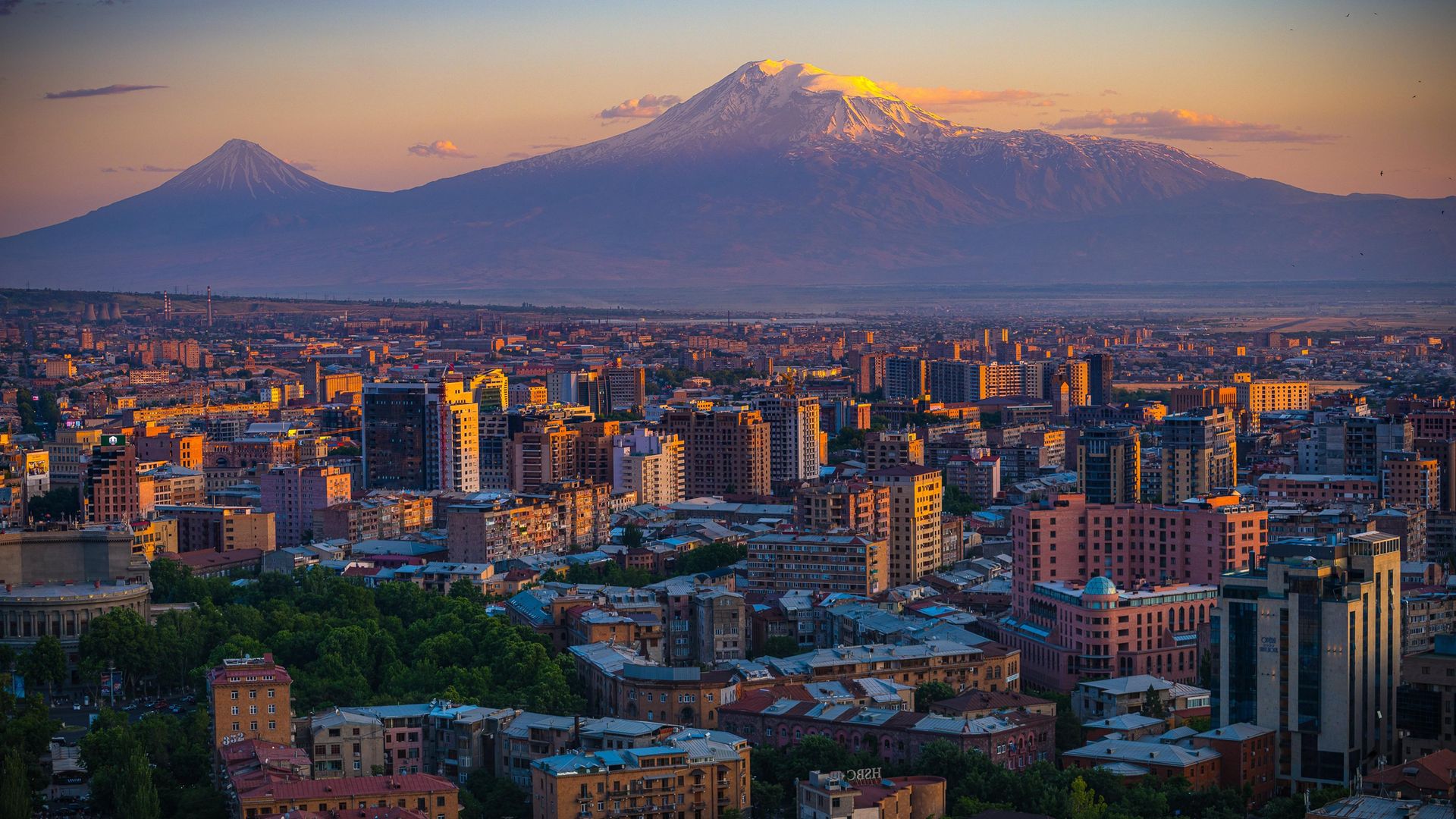
The nation-states of Armenia, Azerbaijan and Georgia are located in Caucasia, the area between the Black Sea and the Caspian Sea, no more than 350 miles across at its narrowest point, which is mostly taken up topographically by the Caucasus mountain range. These three countries are widely, but by no means universally, considered to be part of the European continent. The fact that they take part in the Eurovision Song Contest is hardly relevant to their status as European or not: Israel and Australia also participate, and no one would want to argue that they are European countries. Armenia, Azerbaijan and Georgia also take part in European football competitions, but we can note once again that Israel does too.
Linguistically, the situation in the Caucasus is complex and fascinating. Of the major national languages of the three countries, Azeri (Azerbaijani) is closely related to Turkish and somewhat mutually intelligible with it. Georgian is a member of the South Caucasian Kartvelian language family and is not known to be related to any other European language outside the Caucasus.
Armenian, on the other hand, is a language which can be located fairly and squarely within the bosom of the Indo-European language family: it is historically related, albeit distantly, to English, Welsh, French, Russian and Hindi. It has, though, no very close linguistic relatives – nothing to compare to the relationships of English with Dutch, or of Italian and Romanian, or Polish and Slovenian. In this respect, its situation is more like that of Greek and Albanian, which are both very clearly Indo-European languages but constitute sub-families of their own. Some linguists, however, have made a rather strong case for Armenian being more closely related to Greek than to any other language, and suggest that the two languages have both descended from a distant common Helleno-Armenian ancestor which preceded Ancient Greek and Classical Armenian.
Armenian has its own distinctive alphabet, and the language comes in two major standardised varieties, Eastern and Western, with some rather significant differences between them. The Eastern form is closest to the dialect of Yerevan, the Armenian capital, and predominates in the modern independent nation as well as in Nagorno (Upper) Karabakh or Artsakh.
The Western variety, which is particularly associated with the large and now depleted Armenian community of Constantinople, can be found in many diaspora communities including in the USA, Europe, Argentina, Australia, and Canada. The Armenian language has undergone some remarkable sound changes over the centuries. It is hard to believe, for example, that Armenian erku, ‘two’, has the same ultimate origin as English two, although that is in fact the case. There are Armenian words, though, where it is a little easier to see that there is a historical relationship with other Indo-European languages, for example durn, ‘door’, dustr, ‘daughter’, kov, ‘cow’, loys, ‘light’, and ut, ‘eight’.
Armenia adopted Christianity very early on, around 300 AD, and Armenians are typically Christian. The Armenian language currently has something like seven million speakers. Most of those who speak Eastern Armenian today live in the Republic of Armenia, with many of the rest being located in Georgia, Russia, Nagorno-Karabakh, Azerbaijan – and in Iran, where they constitute the largest religious minority.
As is well known, until the First World War there were very large numbers of Armenians in what is now Turkey, particularly in the eastern part of the country in the region around Lake Van. They had been living in that area for very many centuries, perhaps since about 1500 BC – in any case, long before the arrival of Turks beginning in the 11th century AD. But between 1915 and 1923, around 1.5 million Armenians from all over Turkey were massacred, enslaved, deported or otherwise driven out of the country by Ottoman forces, in a process which successive Turkish governments have to this day declined to recognise as constituting genocide.










